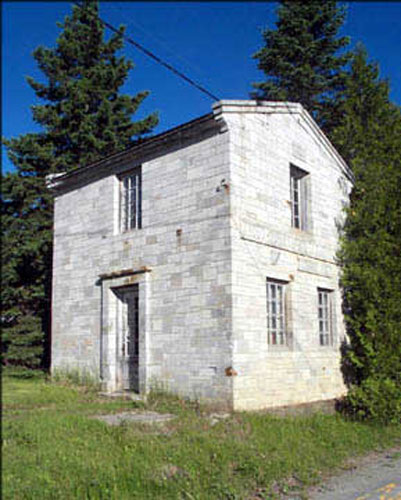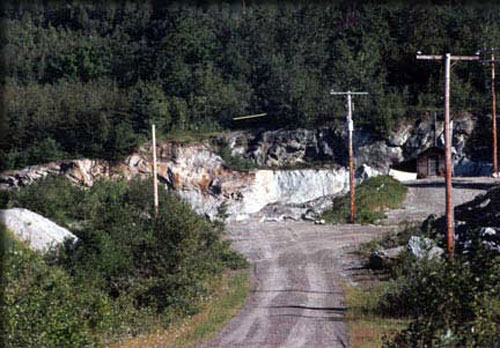|
This is the view of the original pit that I visited when I
first started buying my stone from them in 1971.
Between 1925 and 1927, a massive steatite horizon was quarried
northwest of Saint-Pierre-de-Broughton to produce refractory
blocks and pencils to make marks on glass or steel. The quarry
is located at the northwestern end of the Pennington sheet At
this place, the original serpentinite is almost completely transformed
into steatite and talc-carbonate rock
Stone was mined from this quary from 1927 until 2002, when
they announced that the quarry was closed for good, |


